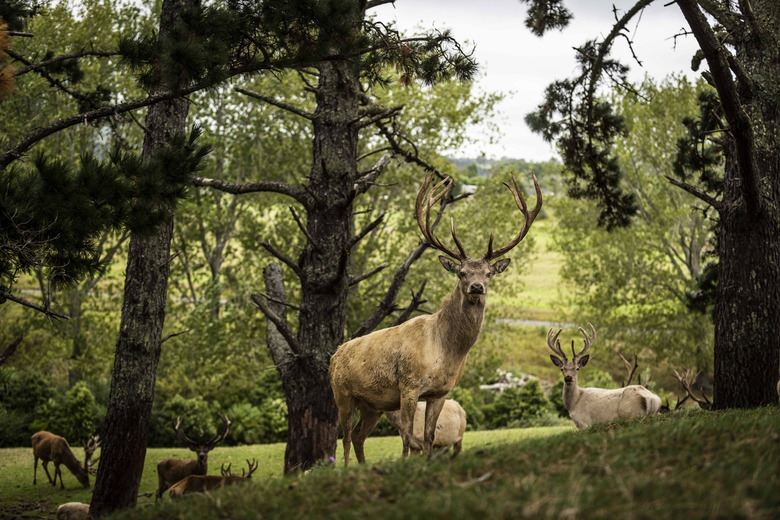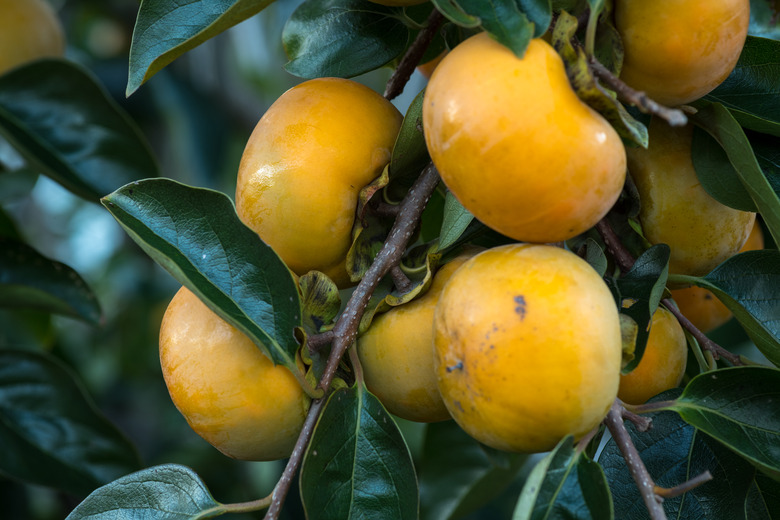The Best Fruit Trees For Deer In Pennsylvania
Pennsylvania is a large and topically varied state of valleys, ridges and mountains that encompasses at least six USDA hardiness zones. Its location near Lake Erie means that cold winter winds come off the lake, and temperatures can reach as low as -5°F. If you're planting a fruit orchard to attract deer in Pennsylvania, consult the detailed listing of zones for each city at The Garden Magazine before you begin.
Planting a deer orchard, lush with a variety of fruit trees for deer, won't provide an immediate source of food for deer. With time, however, it will flourish and attract foraging deer throughout the year for a lifetime. Like all wildlife, deer need food, and the orchard supplies that. Hunters need to attract deer, and the orchard provides the source of attraction. It's a win-win for all, especially when it's time to cull the deer population.
Tip
If you're wondering where to plant your fruit tree for deer, look for a gentle slope with loamy soil and good drainage. Also consider planting dwarf variety trees that don't grow exceptionally tall. This makes foraging easier on the deer and prevents the fruit from collecting on the ground and attracting rodents.
Planting Fruit Trees for Deer
- **Plant on a Gentle Slope:** Planting young fruit trees and berry shrubs for deer takes planning. Survey your plot of land to find a low-lying frost
pocket. Don't plant there as the cold has a negative effect on the tree. The same holds true for planting on ridges: don't. Look for a gentle slope with loamy soil and good drainage.
- **Plant Dwarf Fruit Trees:** Find dwarf variety trees that don't grow exceptionally tall, because shorter trees makes foraging easier on the deer. It also prevents the fruit from collecting
on the ground and attracting rodents.
- **Plant Near the Center of Your Orchard:** Know your variety of fruit tree and plant the hardy trees in
full sun. Plant trees at the edge of your growing zone on a north-facing slope. Organize your plantings to take advantage of the grazing deer. Plant your orchard near the center of your property, so the deer need to dive deep to get to the trees, thus holding them longer.
- **Plant Upwind:** In order to keep the human scent
away from the sharp noses of the deer, plant your trees upwind. Space your trees at least 20 to 25 feet apart to allow sunshine to pass through the branches.
Plant Apple Trees for Deer
Deer love apples. With your local supplier, discuss apple trees and purchase the apple (Malus pumila) tree variety that suits your hardiness zone. Some hybrids produce fruit quickly, but they don't produce apples with the same flavor and sweetness as the varieties you buy at the supermarket. But then again, deer don't purchase apples at the supermarket!
Apples are full of carbohydrates and sugars, which help add to the deer's heft during the cold winter. Look for small apple varieties or crabapples as they are easier to chew.
Tip
Plant several varieties of apple trees near one another to encourage pollination and fruiting.
Pear Trees for Deer
More temperamental in their planting requirements and zone selection, pear (Pyrus communis) trees provide the carbs needed for winter survival. European and Asian varieties can be planted near one another, and hybrids of the two varieties ward off fireblight disease.
Not as hardy as apple trees, deer have a certain sensitivity to pears, and many bypass the ripe apple and head for the pears.
Persimmon Trees for Deer
Not appreciated by humans as much as apples and pears, persimmons (Diospyros virginiana) are best purchased as a hybrid. They can be planted as far north as Pennsylvania. Producing fruit within two to three years after planting, persimmons are some of deer's special favorites.
Persimmon trees are either male or female, so plant several to ensure proper pollination and fruit production.
Cranberry Bushes Attract Deer
While not a tree, the cranberry (Viburnum trilobum) bush is a major food producer for wildlife. Versatile in its soil needs, the cranberry bush, when planted in groups, provides excellent ground cover for other plantings.
Warning
When a tree has been damaged around the circumference of its trunk, it's been "girdled," and the trunk is exposed to the elements. The condition is severe and often leads to the death of the tree.
Protecting Fruit Trees in Mating Season
In November and December, deer are on the move in Pennsylvania. It's mating season, and humans and bucks are the hunters, and does are the prey. This time of year is termed the "rutting" season, during which bucks mark their territory by rubbing their antlers against the trunks of trees. They'll also rub their facial glands on small branches.
Protect your fruit trees by installing chicken wire or fencing around the trunk of the tree. Specifically designed "deer fencing" is also available. Be sure it is at least 8 feet tall to prevent the deer from jumping above the fencing.
Tree guards, mesh wrapping and plastic tubing can also protect the tree while allowing it to continue to grow.

